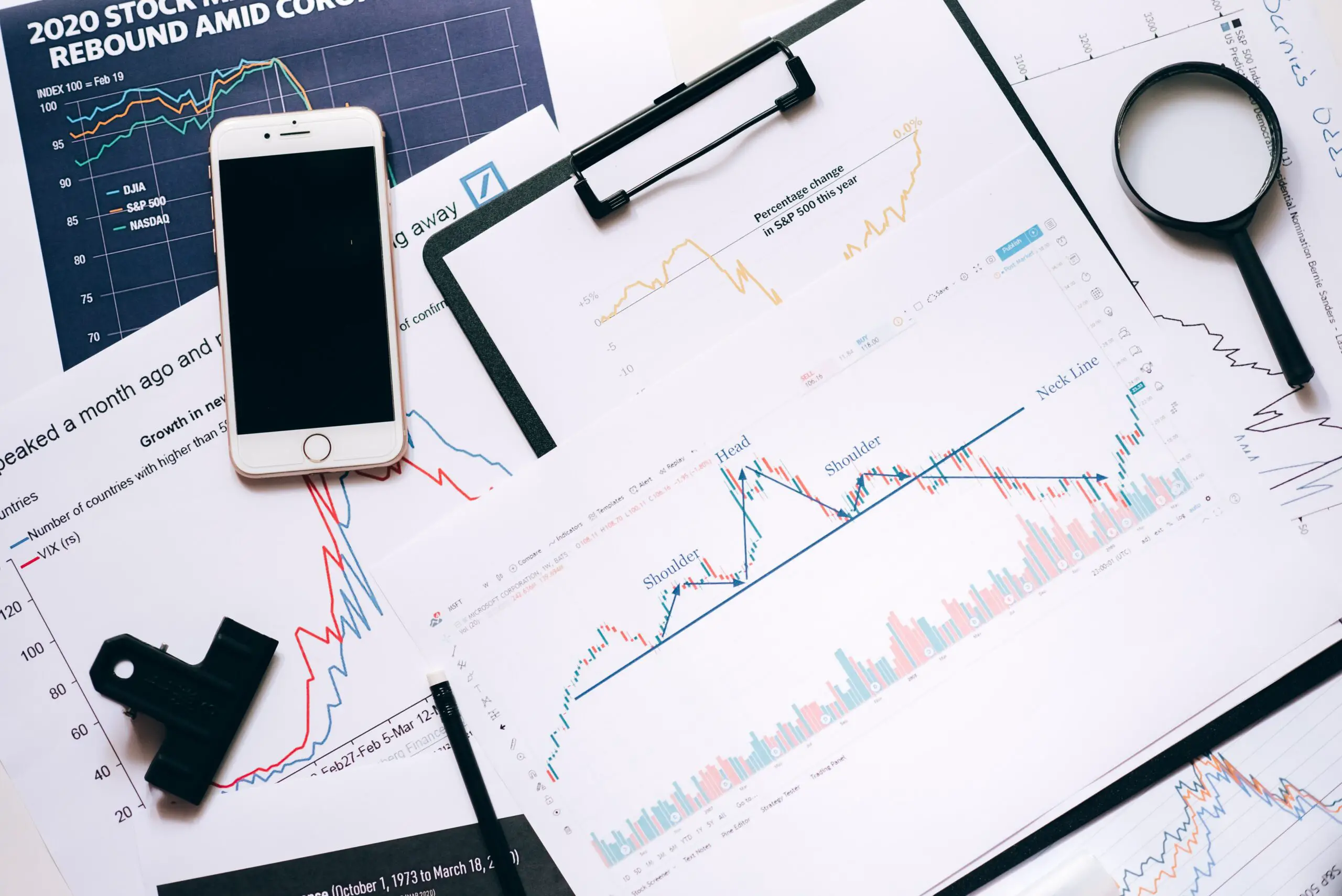Investors want not only returns but also to protect themselves against risk and volatility. There are several financial metrics that can be used when investing in stocks to determine the risk and volatility your portfolio may experience, like beta. But what exactly is it? What does it tell investors and what is a good beta for a stock?
In this article we will go over some of the most common questions about beta in stocks, so you can use this metric when researching stocks to invest in.
What is beta in stocks?
Beta (β) is a financial metric used when investing in stocks that measures the correlation between a stock’s past price movements, and the broader market. In simple terms, it compares the fluctuations of an individual stock with an index, which is usually the S&P 500.
The beta of a stock can be used to assess the risk and volatility relative to the general market, and it can also be used to understand the expected returns of a stock.
How beta is used to analyze risk and volatility
Beta is a simple concept but it allows investors to easily compare the historical movement of a certain stock with the market. If a stock’s beta is 1, it means that it moves together with the market, which means that the expected returns, volatility, and risk should be similar to the market.
Beta under 1
If a stock has a beta of under 1, it means that it is expected to lag the market. Therefore, when the market goes up, the stock is expected to go up, but not as much as the index. Conversely, when the stock market goes down, the stock is also expected to go down, but not as much as the index. For that reason, the stock is expected to be less volatile than the overall market.
Beta above 1
Stocks with a beta over 1, are expected to be more volatile than the broader market. If the market goes up by 1%, the stock is expected to go up by more than 1%. In the same way that if the stock market goes down 1%, the stock is expected to go lower by over 1%.
Negative beta
The beta of a stock can also be negative which is uncommon, but it is possible. For example, if a stock has a beta of -1 means and the market goes up by 1%, the stock is expected to go down by 1%.
Beta pros and cons

Before we dive into what a good beta is for a stock, we need to first consider the pros and cons of using beta to evaluate risk and volatility.
Pros of beta
A simple way of measuring risk and volatility
Beta is perhaps one of the simplest ways of analyzing risk and volatility. Pretty much any online platform that shows stock data, and financial ratios will display the beta of a stock. It makes it easy to compare stocks based on the beta.
Gives historical perspective
It also gives investors a good historical perspective of the stock’s past price movements over at least the last 3 years. Since it easily shows investors how the stock has moved in the recent past relative to the index.
Useful when building a portfolio
It also comes in handy when building a portfolio, and calculating the beta based on your allocation. Investors can easily understand how the portfolio as a whole should move in relation to the broader market.
Cons of beta
While beta can be extremely useful, it cannot be used as a single measurement of risk and volatility. It is far too simple, and it does not accurately reflect the risk or volatility expected of an individual stock.
How many years are used to calculate beta
It is commonly calculated for 3 years, and in some cases 5, but the fact is that in some cases it might be too short of a time frame. The reason is that market and economic cycles affect different stocks and using beta based on the last 3 years is not very accurate in some cases.
Moreover, some stocks with recent IPOs do not have enough historical data to be able to accurately calculate beta. And stocks that had a particularly positive or negative performance in the previous years, will experience a skewed beta, which does not paint the full picture.
Past performance is not indicative of future results
It is measured historically and past returns do not guarantee future returns. For that reason, the performance of a stock over the next years might not be the same as the previous 3 years. It can give investors a wrong idea of how a stock is expected to perform.
Beta is not risk or volatility
It simply measures the correlation between an individual past stock price movements and the index, and therefore it does not represent risk or volatility itself. There are intrinsic risks associated with individual stocks that are not reflected in the beta.
Additionally, any recent news or negative developments in a company will not be reflected.
Moreover, the stock market's future performance is constantly changing the value of the beta. This means that in some situations a stock’s beta fluctuates a lot, and does not accurately reflect the risk and volatility.
Depends on the index used
Finally, one of the arguments also used against beta is that it depends on the index used. Different indexes have different volatility levels, and that will also affect the beta of the stock.
What is a good beta for a stock?
While it can be argued what a good beta for a stock should be, it all comes down to the investor. A good beta for a stock depends on the investor’s individual goals, risk tolerance, investment horizon, and investor profile.
Risk-averse investors should stick with low beta stocks, or build a portfolio with a cumulative beta under 1. This ensures that the investment portfolio is expected to be less volatile than the market.
Investors with a higher risk appetite and capacity are advised to choose high beta stocks that are expected to outperform during bull markets.
What is considered a high beta?
A beta above 1.5 is usually considered a high beta, and it means the stock is 50% more volatile than the broader market. High beta stocks tend to outperform during bull markets and consequently tend to underperform during bear markets.
What is considered a low beta?
A beta of 0.5 is a low beta, and it means the stock is expected to have 50% of the price fluctuations of the index. These stocks are often considered defensive stocks because they tend to be less volatile than the market. They perform better during bear markets and tend to lag during bull markets.
Conclusion
While beta to analyze individual stocks has certain shortcomings, it is a useful metric to briefly compare and analyze the expected risk and volatility of a stock. It can be used for a stock portfolio and it can be helpful for long-term investors.

